READY TO GET STARTED?
REQUEST A FREE ESTIMATE
Fill out the form below or call (888) 466-7849 for a free, no-obligation estimate.

Green pest control provides an eco-conscious option to traditional pest control and is especially beneficial in homes and businesses that house the young, the elderly, pets, and those with compromised immune systems or allergies. But are they really effective?
The answer is yes. Green pest control typically utilizes botanical and/or earth-based pesticides and a targeted approach when applying them, focusing on eliminating and controlling pest populations through both preventative measures and purposeful product application, based on your specific pest issues.
One important component of any green pest control program is Integrated Pest Management (IPM). IPM doesn’t just focus on eliminating pest populations but also on identifying and getting rid of the environmental factors that are allowing the pests to procreate and thrive, as well as preventative measures to prevent re-entry. IPM can actually cut back significantly on the amount of pesticides used in treatments (by more than 90%!).
Once green pest control companies identify the problem pests and decide that action is required, there are several methods that are used to eliminate them:
Once you make the decision to invest in a green pest control program, contact an exterminator near you, and they will provide you with the following:
You May Also Be Interested In:
Wildlife Control: Unusual Winter Wildlife
What Are Your Termite Treatment Options?
Pest Control: Does The Weather Affect Pests?
Exterminating: The Last Of The Creepy Crawlers
Fall Lawn Care
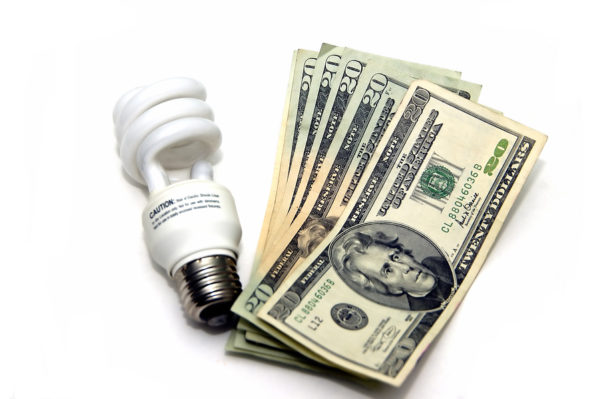
Whether you’re trying to decrease your carbon footprint or just put some extra cash in your pocket each year, cutting energy costs in the winter months is one way to get there. Heating and cooling costs make up a significant percentage of your annual utility bills. By making adjustments in your home, you can reduce the amount of money you spend on energy. Check out these 9 energy saving tips for winter:
According to the US Department of Energy, you can save up to 10% each year on your heating bills by lowering your thermostat by 10-15 degrees for 8 hours a day. For those who work outside the home, the best way to do this is to lower your thermostat when you leave for work in the morning and then bump it back up when you return home in the evening. For those who are home during the day, lower the thermostat when you go to sleep and use flannel sheets and a warm comforter to help combat the chill. If this is too much to remember, consider investing in a programmable thermostat so it will automatically adjust the temperature when you set it to.
If you have rooms that you rarely use such as guest bedrooms or rooms you use for storage, close off and seal the vents that go to these areas. This will help make your home more energy efficient and will direct airflow to the rooms you use the most. You can use space heaters to warm these areas when you need to use them.
The air in your home can become very dry, especially in the winter when the heat is run more frequently. Moist air feels warmer than dry air and also holds heat better. By using a humidifier, you can make your home feel warmer and more comfortable, especially during the times you set your thermostat lower. The humidifier can also help prevent nosebleeds and dry eyes that are common when we run the heat during the winter. You can also increase the humidity in your home by bringing in house plants.
One of the cheapest ways to heat your home in the winter is to use the sun for free heat. Open curtains and blinds on your south facing windows during the winter months to bring heat into your home. Close the curtains and blinds when the sun goes down to help keep the heat inside after dark.
Ceiling fans are a great resource to use to get better airflow in your home. By running your fans clockwise in the winter, heat is trapped in your rooms keeping them warmer. Keep fans on a low setting to gently push warm air down into the room.
We lose a significant amount of money each year by heat and air escaping from our homes due to insufficient insulation. Consider installing TAP (thermal acoustical pest control) insulation to keep this from happening to you. TAP is an energy star rated insulation made from 87% recycled newsprint and treated with a natural pesticide. This not only protects your home from pests but also keeps your HVAC unit running efficiently and can save you 20-38% on your energy bills.
Seal around your utility pipes, gaps around chimneys and recessed lights in insulated ceilings, and the unfinished spaces behind your cabinets and closets. Caulk and add weatherstripping around doors and windows. This will help keep air from escaping out of the house and help reduce your energy bills.
Instead of cranking up the heat, put on warm clothes like sweaters and fuzzy socks. Keep throw blankets on your couches and use area rugs to keep your floors warmer.
Whether it’s in your home or outside when you decorate for the holidays, using LED lights consumes up to 75% less energy and they can last up to 25% longer than traditional incandescent lights. They also emit less heat than traditional lightbulbs, making them a much safer alternative.

Even though we’re well into the winter season, it’s never too late to weatherproof your home. These easy fixes will not only seal up your home and keep it nice and warm, they will also help save you some money on your energy bills this year. Check out these simple winter weatherproofing tips so you’ll be prepared just in case the groundhog DOES see his shadow this year!
Check your doors and windows to make sure they are in good repair. Insulate your doors and windows with weatherstripping. Use transparent weather sealant tape for any areas where the weatherstripping will be applied directly to the door or window. This tape can also be used to temporarily seal any cracked windows until you can permanently replace them. Use door sweeps on the bottoms of exterior doors to keep cold air from coming in. You can install them with nails or with adhesive.
Attics and crawlspaces are notoriously cold areas of your home. Thermal accoustical pest control (TAP) insulation is an energy star rated attic insulation that provides several benefits to your home. TAP eases the burden on your heating and cooling systems, making them more efficient and keeping the temperature in your home more consistent throughout the year. TAP also leads to a 20-38% savings on your energy bills AND protects your home against pests including roaches and ants. Finally, TAP is treated with a fire retardant that limits the spread of fire in your home.
Complete CrawlSpace enclosure is another way to weatherproof your home. Enclosing your crawlspace with Complete CrawlSpace increases energy efficiency, prevents mold growth, and completely closes off your crawlspace to pests. This can also save you up to 18% on your energy bills each year.
Most garages aren’t insulated which makes them very chilly spaces in the winter. Install weather sealing strips on the bottom of your garage door. These strips not only keep out cold air but also keep out rain and pests as well.
Outlets and switches on the exterior walls of your home can be a big source of cold air. One solution is to install foam outlet and switch sealers. These can be installed by simply turning off the power, removing the outlet or switch cover, applying the foam sealers, and reinstalling the covers.
Hardwood and tile floors can be especially cold in the winter. Curtains and rugs can make a big difference when it comes to heating your home. if you have drafty windows, hang some heavy curtains to keep the cold air out. Use area rugs on hardwood floors and in bathrooms with tile floors to help keep them warm.
Air conditioning units in walls and windows give a direct path for cold air into your home. One solution is to install a heavy duty polyethylene and vinyl cover that fits around the outside of the unit. You can also wrap the inside grill with plastic sheeting and double sided tape. Consider installing a programmable thermostat which will automate your interior temperature. This can save you up to $200 per year in heating and cooling costs.
Insulate your hot water heater with a water heater insulating blanket. This saves energy by reducing heat that is lost through the sides of the hot water heater by 25-40%. This reduction in heat loss can also lead to savings on your energy bills.
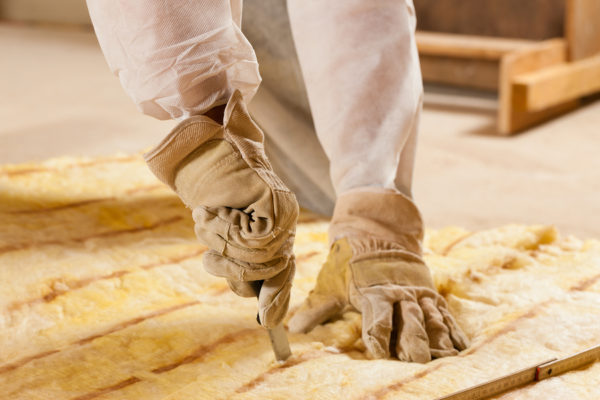
Have you ever wished you could keep your house warmer in the winter and cooler in the summer? Have you ever looked at your electricity bill and wished you could lower your payment? Have you wondered if there was something more you could do to keep pests out of your home? What if there was a product out there that could do all of these things and more? TAP (Thermal Acoustical Pest Control) insulation is energy star-rated attic insulation made of 87% recycled newsprint. TAP insulation all of the following benefits for your home:
TAP insulation is like a “blanket for your home.” The fibers in the insulation are dense enough to prevent air flow but still light enough that they can trap heat. This is especially beneficial during the winter months when the air flow from your home is the strongest and you need your insulation to work the best. This also allows you to keep more consistent temperatures in your home throughout all four seasons.
TAP insulation has small air pockets in its interconnected fibers that decrease the amount of sound that is transmitted from fiber to fiber. This decreases the amount of sound that flows through the ceiling, reducing the noise you hear from outside your home.
TAP insulation controls roaches, ants, and other pests. TAP fibers are treated with borate which then sticks to insects as they crawl through the insulation. Once the borate is ingested by the insect, it disrupts the pest’s digestive system and causes it to starve. Borates have a low toxicity for mammals which makes the risk minimal for humans and pets.
Studies show that TAP insulation can save you up to 30% on your annual energy bills. TAP reduces the air flow that leaves your house, helps keep your temperature consistent throughout the year, and makes your HVAC system run more efficiently, all helping to reduce the cost of your energy bills. The Department of Energy website has a calculator that can show you your potential savings on your current energy bill.
TAP insulation is treated with a fire retardant that helps to limit the spread of fire in your home.
TAP insulation is environmentally responsible as it is made from 87.5% post-consumer content and is also Energy Star rated. This not only saves landfill space but also helps conserve the energy used in your home, making it more green.
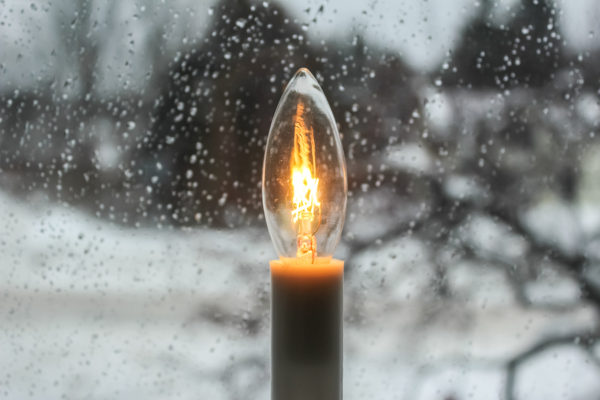
Although winter is still a few weeks away, it’s never too early to start preparing for cold weather. With cooler temps usually comes those dreaded high energy bills. Whether you’re looking to go greener at home or just save a little extra green in your wallet, there are lots of things you can do to save energy and cut down on the cost of your home energy bills. Check out these 13 tips to not only save energy, but save money and stay comfortable in the cold winter weather.
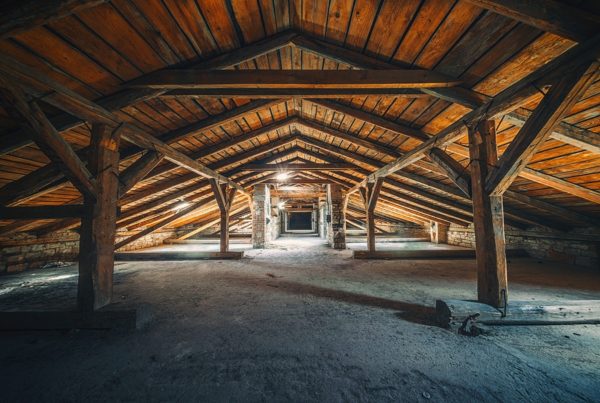
The leaves are changing colors and there’s a chill in the air. Finally! A break from the heat. And while most of us are looking forward to the cooler weather, the change in temperature also means changes in your home. As the weather cools off, it becomes more difficult to regulate your household temperature. And as your heating and cooling system works harder to control the temperature, the increased usage translates into increased utility bills. The is also prime time for wildlife and pests to seek shelter and food inside your home!
Thermal Accoustical Pest Control insulation (TAP) is energy star-rated attic insulation made of 87% recycled newsprint. TAP insulation helps regulate the temperature in your home by keeping them consistent throughout all four seasons of the year. For example, TAP keeps warm air inside and cold air outside during the winter months. By reducing the energy needed to heat and cool your home, utility bills costs can be lowered by up to 30%!
As an added bonus, TAP is treated with borates – a natural pest control product, providing permanent pest protection against roaches, ants and other unwelcome pests in your home. TAP insulation is also treated with a flame retardant that helps limit the spread of fire.
Install TAP insulation in your attic to get these benefits, not only this winter but throughout the rest of the year:
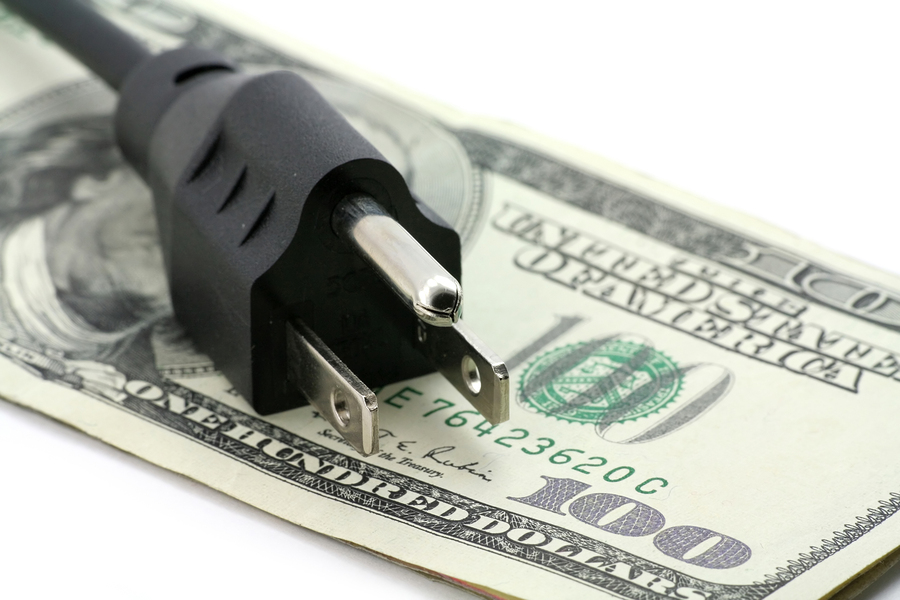
Your electric bills are probably at an all-time high right now. It’s hot, the A/C is running all day, and energy costs are on the rise. Here are a few tips on how to save some money this summer and in the upcoming winter months, by lowering utility bills and improving energy efficiency, making your home more comfortable:
Most homes don’t have enough insulation. Adding insulation to your home provides an immediate return on your investment by reducing the amount of energy needed to heat and cool your home. Some products, like TAP Insulation, can even lower utility bills by up to 30% and has the added benefit of pest protection!
Keeping cool air in during the summer and warm air during the winter increases the efficiency of your HVAC system and makes your home more comfortable (and keeps pests out!). Check around doors and windows for gaps and install weatherstripping to correct any issues.
Using less light powered by electricity is an easy way to cut utility costs. Consider installing dimmer switches in the areas of your home you spend the most time, and turn the lights on a low setting to conserve energy.
While ceiling fans use electricity, the benefits of air circulation outweigh the electric usage. Run ceiling fans consistently to keep air distributed evenly throughout your home, making your HVAC system run more efficiently.
One of the best ways to increase energy efficiency is by completely closing off your crawlspace with a service like Complete CrawlSpace. This could save you up to 18% on utility bills and offers other home-healthy benefits like mold growth prevention and pest control.
While most of us love a lot of natural light coming into our homes, that sunlight heats up the house and makes HVAC systems work extra hard to keep it cool. During sunniest hours (12-4 ) keep curtains closed to cover windows or consider installing shutters, blinds or shades to help cut down on sunlight exposure.
A lot of people forget to change their filter regularly which increases utility costs. Change your filter out about every 30 days to keep your HVAC system running efficiently.
While this will cost more out of pocket initially, the long term savings on energy bills will be worth the investment. Energy Star-rated appliances perform more efficiently, using less energy to perform the same functions as your old appliances. And you can always upgrade one at a time to spread the cost out over time!
When washing clothes or other laundry, use cold water cycles when possible and only wash full loads. If you’re using the dryer, make sure you clean the lint trap after every load; this maximizes your dryer’s efficiency so it doesn’t have to work as hard or long to dry laundry. It’s also a good idea to scrub the lint trap with soap water once every month or so to remove lint build-up. For even more energy savings, take advantage of the warm air outside and line dry your laundry instead of running the dryer.
Electronics in your home are using power (and increasing your utility bills!) even when they’re not being used. To avoid this, replace power strips with surge protectors that automatically turn off power to electronics or devices not in use.

Improving the health of your home offers major benefits to your family. Reduce waste, minimize exposure to chemicals & toxins, breathe healthier, lower your risk for sickness, and improve the overall health of your environment with these 10 healthy home tips.
Most plastics contain chemicals that are added for functionality. Some of these chemicals have been proven to be toxic. It has also been proven that some of these chemicals can leach into food and liquids that are contained in the plastic. While it is unlikely that one can completely avoid plastic altogether, it is important to limit its use with items that are likely to come in contact with the mouth. Most plastics are marked with numbers which indicate the type of plastic used to make the item. Plastics marked with #3 (or “PVC”) contain a toxic chemical that was recently banned in 2009. Plastics marked with #7 (or “PC”) are usually clear and rigid (e.g. food containers and water bottles). These containers have BPA which can leach into food and water that is in the containers. It is best to avoid plastics with these numbers if at all possible. Glass and ceramic containers are a much healthier option than plastic. However, if glass or ceramic are not available, plastics marked with a #1, 2, 4, or 5 do not contain BPA and are much safer choices than the other plastics mentioned above. Don’t heat plastic containers in the microwave as this releases the chemicals in the plastic. If you can, wash them by hand; if you do put them in the dishwasher, put them on the top shelf as the water is cooler there.
Most canned foods are lined with the same chemical, BPA, that was mentioned in tip #1. Try using fresh or frozen foods instead of canned when possible. When buying fresh foods, especially vegetables, try to buy organic as these foods are grown with less pesticides. Check to make sure your salt is iodized; it helps to maintain thyroid function. Check the mercury content of fish; some fish are considered mercury-rich. It is best to avoid these fish as much as possible, especially if you are pregnant. Use a filter when drinking tap water to remove contaminants and use a stainless steel, reusable water bottle.
Avoid non-stick cookware and kitchen utensils if at all possible. If you must use them, try not to overheat them as this converts the toxic particles into gas form and allows them to release into your food. Try to use stainless steel or cast iron cookware and wooden or stainless steel utensils instead.
Many cleaning products contain chemicals that have been proven to lead to asthma, cancer, and other health issues. Check the ingredients on your cleaning products and opt for “green” products instead as these contain less chemicals than traditional cleaners. Most of these cleaners are marked with a label indicating they are “green certified.” If you must use traditional cleaners, check the label for diluting instructions and use the least amount as necessary to do the job. Consider using natural alternatives to cleaners, like vinegar diluted with water and baking soda, which is a great alternative to window cleaner. Mix baking soda and water to form a paste which can be used to clean ovens and toilets. Dilute vinegar in a bucket of water to mop floors. Green is the way to go when it comes to pesticides, as well. The saliva, feces, and shedding body parts of cockroaches have been proven to trigger both allergies and asthma. A green pest control program gets rid of pests while maintaining the lowest environmental impact possible, and it’s pet and family-friendly! Mosquitoes transmit a multitude of diseases like Zika, West Nile, malaria, dengue and more. Reduce mosquito bites and lower your risk with mosquito bite prevention and a green mosquito control program – guaranteed to reduce the number of mosquitoes and mosquito breeding sites around your home without harsh chemicals.
Allergies and asthma can also be triggered by pet dander, dust, and other irritants commonly found in your home. Think of your home as an organism and your heating & cooling systems as the breathing mechanisms. The system supplies conditioned air but at the same time it pulls that same air back into the return. This means that the air is being constantly recycled and is picking up particulates from pets, cleaning products and what you cooked for dinner. It’s no wonder it’s polluted. The first step to getting rid of the dust in your home is to dust and vacuum often. Vacuum cleaners with HEPA filters are now available that trap and collect more dust and irritants than a regular vacuum cleaner. Follow this up with wet mopping your floors often, as well. Consider investing in an air purifier for your home that’s installed directly onto your current heating and cooling system, making the air inside your home cleaner, fresher and healthier for the whole family.
Check the age of your home. If it was built prior to 1978 there is a good chance the paint contains lead. Repainting with low VOC paints can reduce your exposure to toxic lead. Does your furniture contain foam? Many foam stuffed items such as mattresses are treated with toxic flame retardants. Check the items carefully to make sure the foam is not exposed and repair or replace if they are. Check your light bulbs. Compact fluorescent light bulbs contain toxic mercury which can be harmful to you and your family. Handle them with care, especially when disposing of them. Wooden furniture such as picnic tables and swing sets, as well as wooden decking on the exterior of your home can contain arsenic if built before 2005. Replace with items built after 2005 or seal them to reduce your exposure. Check your crawl spaces in your home. One of the best ways to increase energy efficiency, prevent mold growth, and control pests is to enclose your crawl space. This could save you up to 18% on utility bills! In addition to the crawl space, you should also check the insulation in your attic to see if it’s adequate. If not, consider adding a green insulation product like TAP Insulation which can reduce the amount of energy needed to heat and cool your home, conserving energy while significantly reducing energy bills.
Since we don’t always know what makes up the fragrances of our personal products, consider buying fragrance-free. Does your toothpaste contain fluoride? Fluoride is toxic to children under the age of 2. Use fluoride-free toothpaste for your kids. Check your shower curtain; if it’s vinyl, throw it out. And regardless of the material it’s made of, shower curtains should be left outside for several days before installing in your home. Avoid using products that aren’t absolutely necessary such as hair spray, detanglers, dryer sheets, and fabric softener. Save money while reducing your family’s exposure to toxic chemicals!
Many pests can enter your home in ways that you would never think of. Seal any openings that could be potential pest entry points – utility openings where wires or pipes come into the foundation and areas around gas meters, dryer vents, and outdoor faucets. You can use caulk, expandable foam, copper mesh, or cement to seal these openings. Examine doors and windows. Be sure to seal any gaps and cracks around windows and doors that would allow pests to enter the home. You can use weather stripping or caulk to seal these problem areas. You can also fit the bottoms of your doors, including your garage doors, with rubber seals. Weather stripping can also be used to seal the bottoms of sliding glass doors. Be sure to examine your screens on doors and windows, as well. Repair any rips/tears that can be fixed and replace the screens that can’t be fixed. If you have a chimney, make sure you install a chimney cap to keep out birds, bats, and other wildlife. You can also install wire mesh over attic vents to keep out bats, squirrels, and rodents. If you have a woodpile outside, make sure to keep it at least 20 feet from the exterior of your home and elevate the woodpile if possible. Cut back overgrown landscaping 1-2 feet so they are not touching the exterior of your home. You should be able to walk the entire perimeter of your house without touching any landscaping. Lighting also attracts pests, especially around windows and doors; using sodium vapor lighting can help.
Hand washing is easy to do and it’s one of the most effective ways to prevent the spread of many types of infection and illness. Help stop the spread of germs by washing your hands often, especially during key times, such as before, during, and after preparing food; before eating food; before and after caring for someone who is sick; before and after treating a cut or wound; after using the bathroom; after changing diapers; after blowing your nose, coughing or sneezing; after touching an animal, animal food, or animal waste; and after touching garbage. If soap and water are not available, use an alcohol-based hand sanitizer that contains at least 60% alcohol.
Keep a distance between flammable objects (papers, curtains, plastics, etc.) and fire sources (oven, stove top, portable heater, etc.). Keep electrical appliances wrapped and away from water. Install smoke detectors, check them regularly, and replace the batteries at least once a year. Avoid overloading outlets and extension cords. Keep fire extinguishers handy and know how to use them.
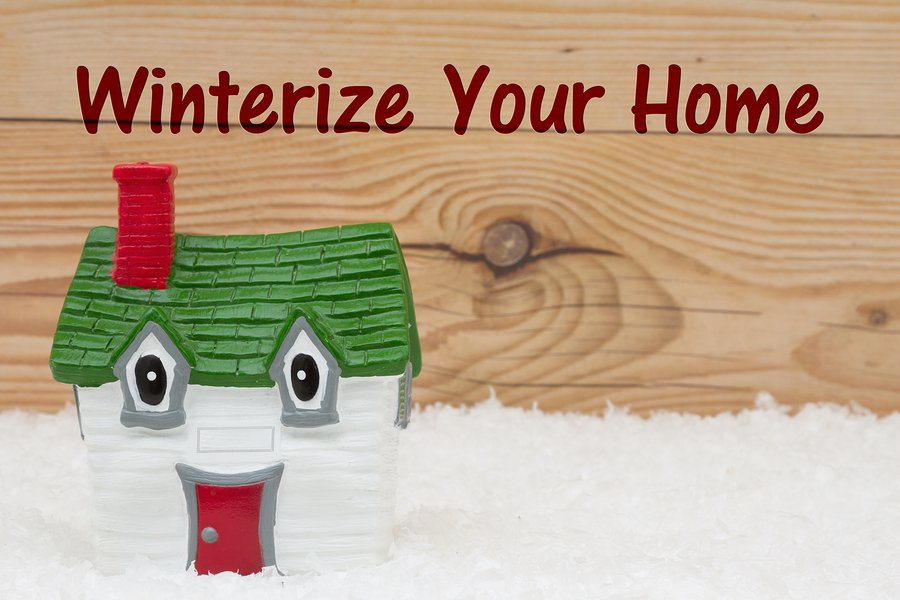
Winter can be harsh on our homes and our wallets. It can be a struggle to keep warm air inside, making us cold and driving heating costs up. But you don’t have to be cold OR empty your pockets this winter with these home winterization tips.
Keeping your heating and air system maintained with regular HVAC tune-ups will ensure your unit is running at maximum efficiency, making your home warmer and your bills lower. Regular maintenance will also extend the life of your HVAC system! This includes cleaning and/or replacing filters, checking thermostats, and checking/cleaning heating system components, all of which are usually included in an HVAC tune-up done by a heating and air company.
Most homes don’t have enough insulation which is needed to help your HVAC system run more efficiently, keep cold air out, warm air in, resulting in lower utility bills. Call an insulation company – most offer free inspections – to check your home’s insulation levels. Then you can decide what and where you need additional insulation and what kind will work best for your home. Consider a blown-in option, like TAP Insulation, which has the added benefit of permanent pest control.
Set your water heater’s temperature to 120 degrees or lower. This will save up to 10% on monthly water heating costs without you having to give up hot showers.
Don’t pay for unused heat by forgetting to lower the thermostat before you leave the house. To make this easy, consider installing a programmable thermostat.
Sealing gaps around your home is one of the easiest ways to keep warm air in, cold air out, prevent pests, and save money. Check around windows, doors, chimneys, and pipes for openings, gaps, and cracks, and repair as needed. For added protection, consider installing storm windows and doors.
Lower water heating costs and prevent pipes from freezing by insulating them. Check your local home improvement store for insulation options; most are easy to install yourself.